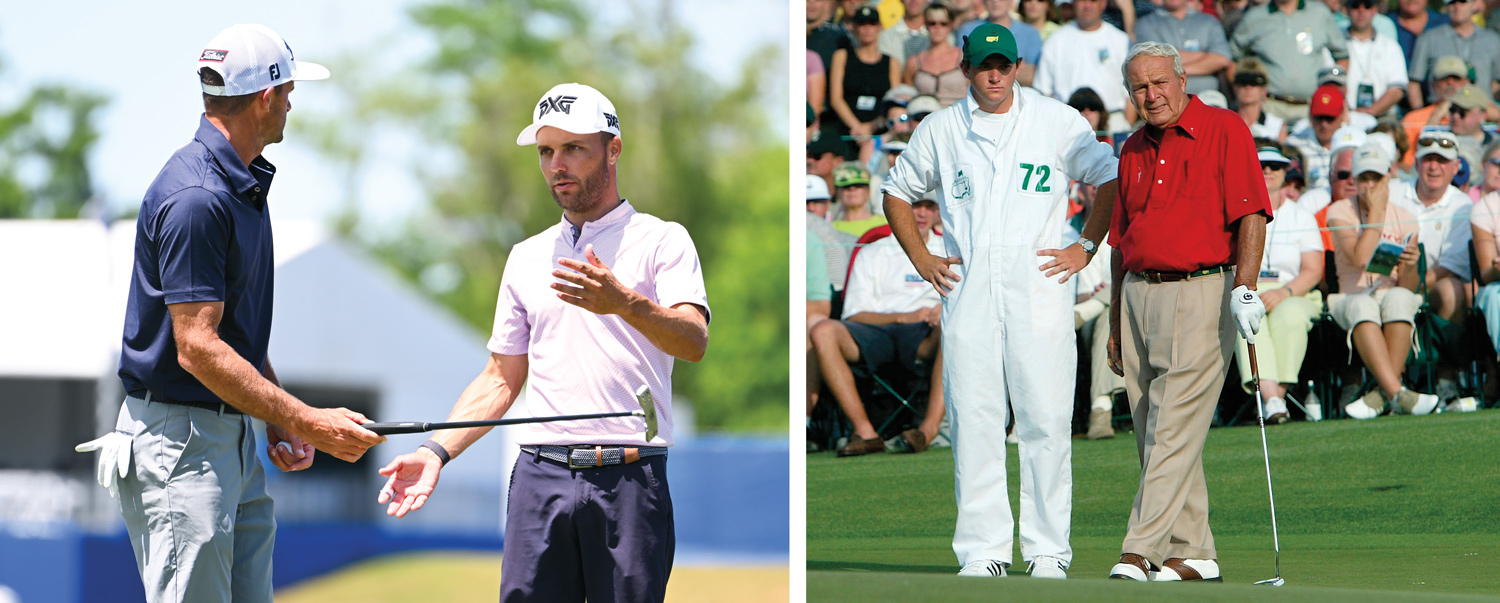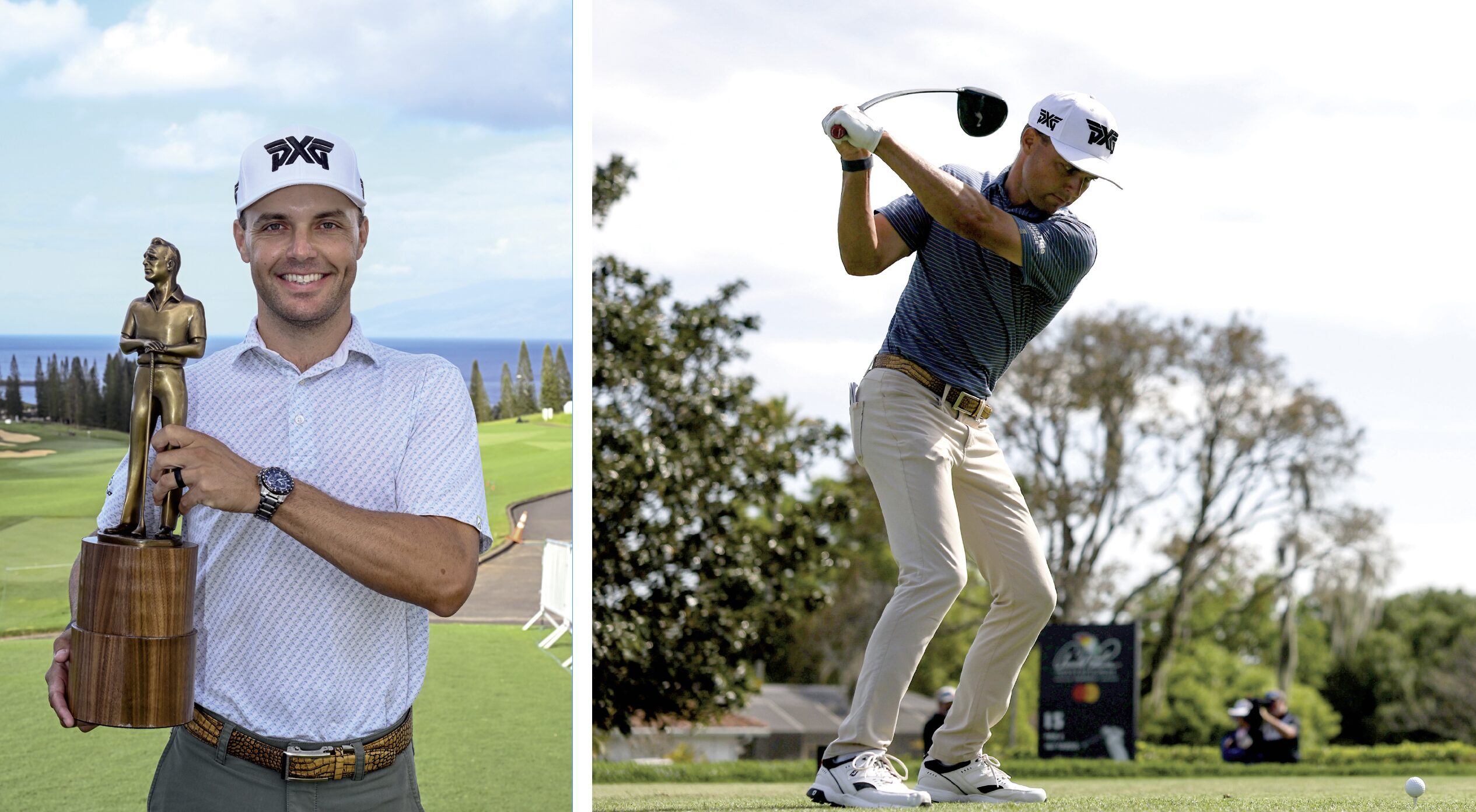
ifteen-year-old Sam Saunders stood on the first tee at Bay Hill Club, anxiously awaiting Eric Cole’s arrival. The next few hours would be a moment of truth, he thought. As it turns out, Saunders was right, but the moment would prove decisive in ways a 15-year-old couldn’t have forecasted.
In 2002, Saunders and Cole were both freshmen, but they attended separate high schools. Their schools’ golf teams didn’t play each other, so the two promising young athletes only knew of one another through grapevine gossip. “I had heard of him,” Saunders recalls, “but I didn’t know if this kid was actually that good.”
Cole held a similar stance. “Everyone said he was a really good player,” the now-35-year-old PGA Tour pro remembers. “I kind of knew who he was, just for being Arnold Palmer’s grandson.”
Because of his famous grandfather, Saunders practically grew up at Bay Hill, Palmer’s masterpiece outside of Orlando. Cole, on the other hand, only gained entry via a family membership once his mother got re-married around the start of his freshman year. “It worked out very well for me,” Cole says, chuckling as he thinks about his fortune being a young golfer with professional aspirations whose new stepdad was a member of such a prestigious club.
As Cole began spending time at Bay Hill, members of the club soon took notice, and it wasn’t long before Saunders heard speculations that Cole could beat him. “There’s no way he can beat me,” Saunders remembers saying. “I’m the best ninth-grader there is.”
While Saunders was eager to play Cole just to settle any debates, his would-be opponent harbored a similar desire—and with similar motivations. “We were only in ninth grade, but more people knew of him and talked highly of him,” Cole says. “I was pretty decent, too. So I wanted to play with him just to see where his game was compared to mine.”
By the end of their informal nine-hole match that day at Bay Hill, the teenagers posted identical scores—Saunders has hazy recollections that they each shot five under par. Of greater significance, they both walked off the ninth green with a newfound, mutual respect for one another. “Even though we didn’t play at the same high school or play in a lot of the same junior golf tournaments, I always had my eye on him,” Saunders says. “And he always had his eye on me, just following each other through the process of growing up.”

About eight years later, following successful collegiate careers at Clemson and Nova Southeastern University, respectively, Saunders and Cole returned to Orlando and promptly moved in together, both setting out to pursue careers as pro golfers. The duo would often coordinate practice sessions and social rounds together at Bay Hill, and just as it had been during their high school years, their contrasting approaches to the game proved to be positive influences on each other. “Sam is less technical and plays golf more on feel,” Cole acknowledges. “I liked the way he did that—it helped me realize that you don’t have to swing perfect or play perfect golf. With Sam, I probably did the exact opposite, helping him focus more on his technique and being more detailed with what he was doing. It was a perfect combo. His strengths rubbed off on me, and my strengths rubbed off on him.”
Saunders found professional success first, in large part due to sponsor exemptions that got him into the field of seven PGA Tour events during the 2010 season. Then 22, he made the cut in three of those tournaments, finishing as high as a tie for 17th at the Honda Classic. The following year, he played in eight PGA Tour events, making the cut only twice; however, one of those two events (the Pebble Beach AT&T Pro-Am) saw him finish tied for 15th.
“Getting sponsor exemptions is interesting, especially in the position I was in being Arnold Palmer’s grandson,” Saunders acknowledges. “I know why I was getting them. I’m not an idiot. But there was pressure that comes along with that, and sometimes I kind of wish that I could’ve gone about my professional career being an unknown name.”
That said, there were tangible benefits that came with the notoriety of Saunders’s lineage, and the journeyman pro golfer is the first to recognize them. Most notably, those sponsor exemptions introduced opportunities for significant paydays, and when Saunders played to his ability, the monetary rewards that followed were significant.
“The most advantageous thing that happened for me getting those sponsor exemptions—other than the experience—was actually making money to the point where I could support myself, chase Korn Ferry Monday qualifiers, do Q School, and all that stuff without a lot of stress,” he says.
Cole, on the other hand, had to follow a different path. He had to grind it out on the mini-tours, playing to win because winning—and the modest paychecks that accompanied those victories—was paramount. At one point, Saunders offered to help Cole out financially. He was happy to gift his friend some money, which he knew would go a long way to help Cole make ends meet as he worked his way up the mini-tour ranks. But Cole refused to accept it.
“I respect the heck out of that,” Saunders says. “Eric was never there to take a handout from anybody. And having to win a tournament to be able to pay your credit card bills, there’s nothing that’s going to make you handle pressure better than that.”

In 2018, however, Cole was hampered by a back injury that prevented him from competing. Saunders, at that point, was entering his fourth year on the PGA Tour, and while he had made the cut 47 percent of the time during his previous three years on tour, he felt like he could do better. Moreover, he knew Cole could help. So Saunders hired him.
Cole worked as Saunders’s caddie and also as a swing coach, if and when Saunders needed it. “He helped me dramatically,” Saunders says. “The consistency in the things that I did well that year—I drove it great and my putting was better—a lot of it was because of his guidance. It was my best year on tour.”
During that season, Saunders regularly fielded inquiries about his new caddie. When fellow players would ask who his coach was, Saunders’s answer was often not what they expected to hear. “Oh, he’s better than you,” Saunders would tell them. “He’s just not out here.” In fact, looking back on that year, Saunders is confident that Cole was better than 90 percent of the guys who were playing on the PGA Tour at that time.
Five years later, after a steadfast journey up the mini-tour ranks and finally the Korn Ferry Tour, Cole earned his PGA Tour card. Not only that, but by the end of last season, he had claimed rookie of the year honors, poetically earning the Arnold Palmer Award. “It was so cool to watch him get out there and win rookie of the year,” Saunders says. “I could not be happier for him, because I’ve seen the process he’s had to go through. I told a lot of people how good this guy was. And he proved me right.”
Although Cole’s abilities were the predominant reason for his success (he finished the year ranked inside the top 20 for total strokes gained, as well as strokes gained putting and strokes gained on approach shots), the year he spent caddying for Saunders was instrumental. “While everyone on tour is extremely good—they’re the best golfers in the world—I saw that you don’t really have to play perfectly, you don’t have to have your best game every week to have a successful tournament,” Cole says. “I think it was good for me to see Sam having good tournaments even when he didn’t feel great about the way he was playing.”
In Saunders’s estimation, another factor in Cole’s success on the PGA Tour was all the time that he ground it out at the minor-league level. “Through all those years on the mini-tours, Eric learned how to win consistently,” he says. “I don’t care what people say, if you’re winning on one of the best mini-tours in the world, you can win on the Korn Ferry Tour. You can win on the PGA Tour. Winning is winning. It’s a fine line between winning on the PGA Tour and winning a minor-league tour event. Once you get in the mindset of shooting low scores and winning, it carries over.”
These days, it’s Saunders who is grinding on the Korn Ferry Tour, working his way back from injuries and hoping to reclaim a weekly spot on the PGA Tour next season. Cole’s recent success is just one more motivator to earn back his card and to fulfill their longtime shared goal of playing together on the PGA Tour.
The two friends briefly experienced that last season, when Saunders’s status on the Korn Ferry Tour allowed him to partner with Cole for the Zurich Classic’s inaugural two-man team format. If only for a couple of days, the opening rounds of that tournament realized their boyhood dreams of being on the PGA Tour together. “While we both thought back then that that was possible, to actually do it is pretty cool,” Cole says. “To think about where we started versus where we are now, it’s just been a cool road.”
Follow Us On


| Cookie | Duration | Description |
|---|---|---|
| cookielawinfo-checkbox-analytics | 11 months | This cookie is set by GDPR Cookie Consent plugin. The cookie is used to store the user consent for the cookies in the category "Analytics". |
| cookielawinfo-checkbox-functional | 11 months | The cookie is set by GDPR cookie consent to record the user consent for the cookies in the category "Functional". |
| cookielawinfo-checkbox-necessary | 11 months | This cookie is set by GDPR Cookie Consent plugin. The cookies is used to store the user consent for the cookies in the category "Necessary". |
| cookielawinfo-checkbox-others | 11 months | This cookie is set by GDPR Cookie Consent plugin. The cookie is used to store the user consent for the cookies in the category "Other. |
| cookielawinfo-checkbox-performance | 11 months | This cookie is set by GDPR Cookie Consent plugin. The cookie is used to store the user consent for the cookies in the category "Performance". |
| viewed_cookie_policy | 11 months | The cookie is set by the GDPR Cookie Consent plugin and is used to store whether or not user has consented to the use of cookies. It does not store any personal data. |